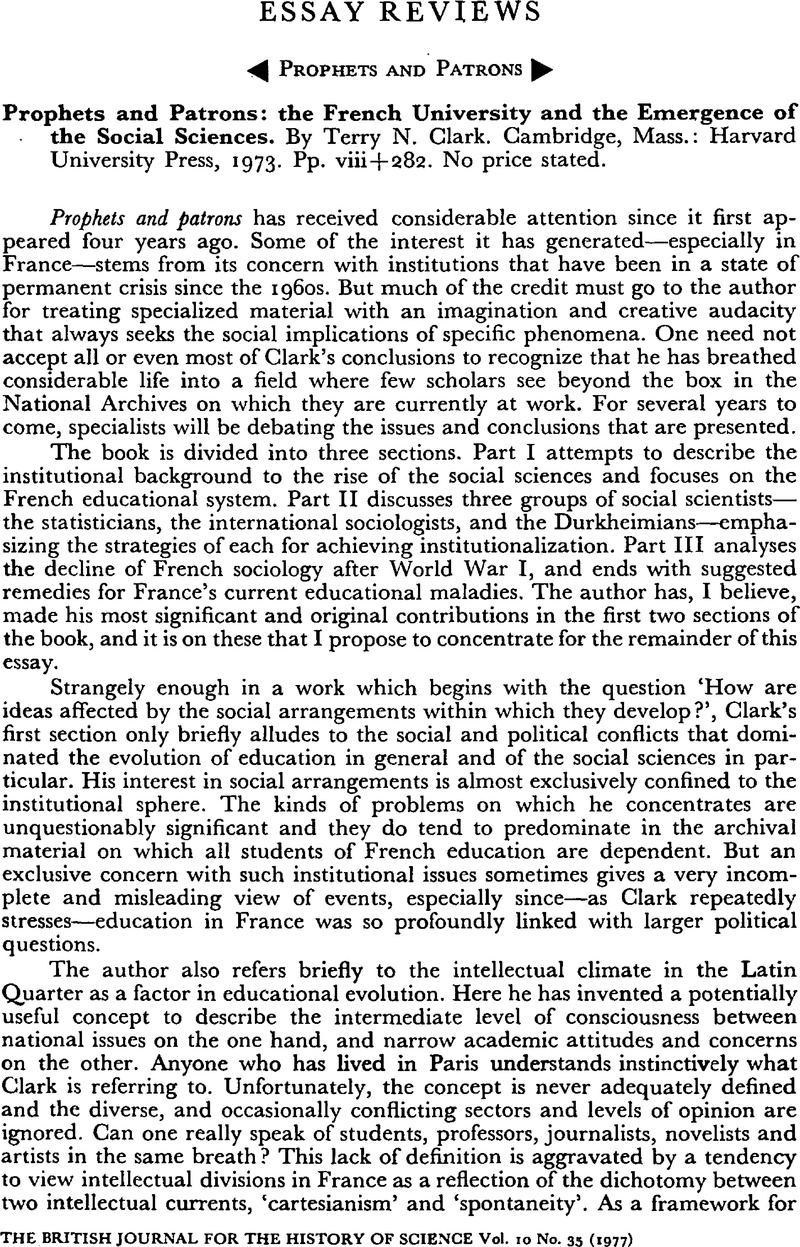No CrossRef data available.
Article contents
Abstract

- Type
- Essay Reviews
- Information
- Copyright
- Copyright © British Society for the History of Science 1977
References
1 Duruy, Albert, Notes et Discours (Paris, 1885), p. 34.Google Scholar
2 See, for instance, Dumas, J. B. A., Rapport adressé à Monsieur le Ministre de l'instruction publique (Paris, 1846), p. 10.Google Scholar
3 Until then, there were five groups of faculties which functioned more or less independently: letters, science, law, medicine and theology. There were also several separate pharmacy schools. For the reform of French higher education during this period, see Weisz, George, ‘The academic élite and the movement to reform French higher education, 1850–1885’, Ph.D. thesis, State University of New York at Stony Brook, 1976.Google Scholar
4 Some examples are Hauriou, Maurice, Les Facultés de droit et la sociologie (Toulouse, 1893)Google Scholar; Faure, Fernand, La Sociologie dans les Facultés de droit (Paris, 1893)Google Scholar; Deguit, Léon, ‘Le droit constitutionnel et la sociologie’, Revue internationale de l'enseignement, xviii (1889).Google Scholar
5 See, for example, Hauser, Henri, L'enseignement des sciences sociales (Paris, 1903), pp. 436–40.Google Scholar




